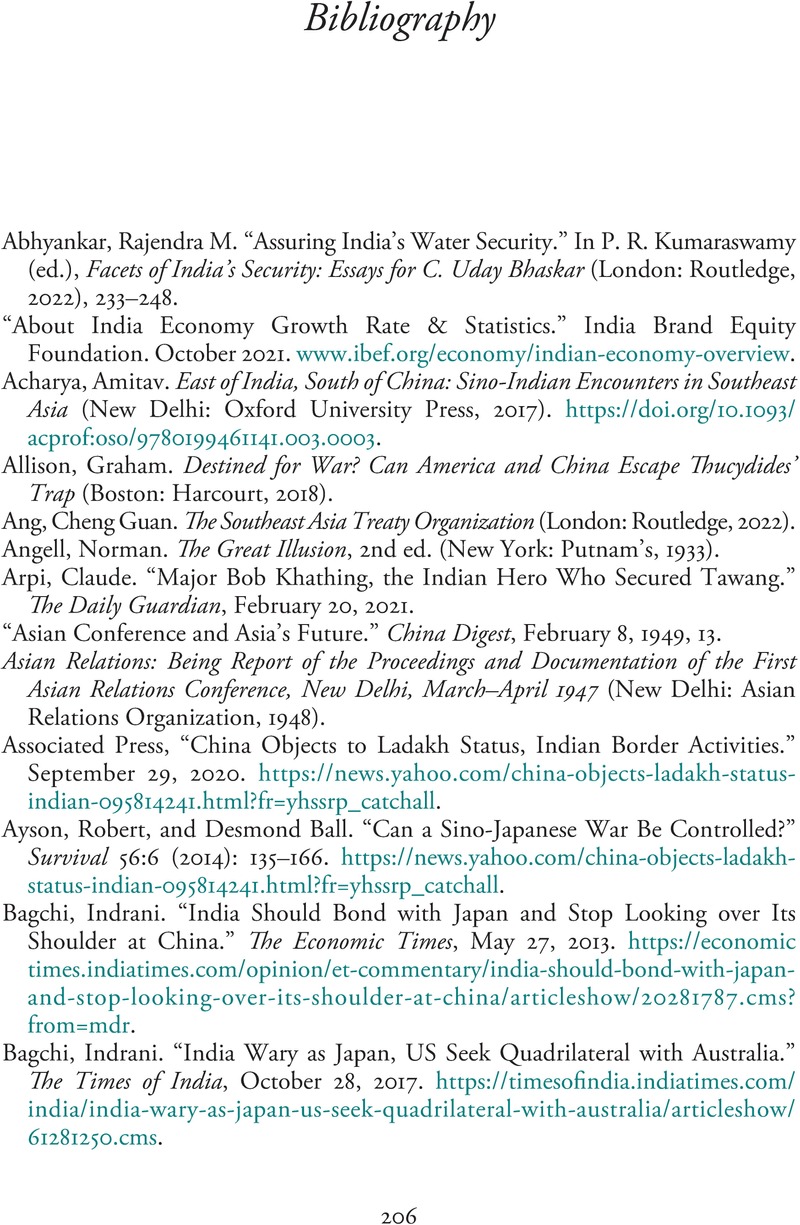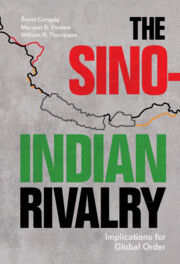Book contents
- The Sino-Indian Rivalry
- The Sino-Indian Rivalry
- Copyright page
- Contents
- Figures and Maps
- Tables
- Acknowledgments
- Part I Introduction
- Part II Spatial and Positional Considerations and Violence
- Part III The Evolution of the Rivalry
- Part IV Interconnected Rivalries and Systemic Considerations
- Part V Conclusion
- Bibliography
- Index
- References
Bibliography
Published online by Cambridge University Press: 15 June 2023
- The Sino-Indian Rivalry
- The Sino-Indian Rivalry
- Copyright page
- Contents
- Figures and Maps
- Tables
- Acknowledgments
- Part I Introduction
- Part II Spatial and Positional Considerations and Violence
- Part III The Evolution of the Rivalry
- Part IV Interconnected Rivalries and Systemic Considerations
- Part V Conclusion
- Bibliography
- Index
- References
Summary

- Type
- Chapter
- Information
- The Sino-Indian RivalryImplications for Global Order, pp. 206 - 238Publisher: Cambridge University PressPrint publication year: 2023



